Reviews like this are one of the main reasons that I do not get invited to many of the “industry insider” events.
In this article, I review the Factor Cossatot 1000 XL flashlight. It is a rechargeable LED flashlight that is touted to be suitable for “tactical LE environments.” Unfortunately, based on my experiences with it, it is not suitable for law enforcement or tactical uses.
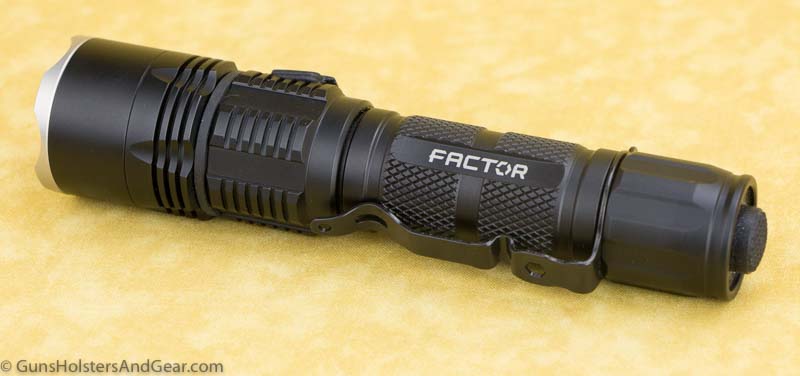
As a guy who spent quite a bit of time as a uniformed police officer, I have seen a lot of products advertised to the professional market that failed to meet my expectations. Based on my sample light, this is one of them.
Quick Takeaways
– durable finish and moderate price
– USB rechargeable
– failed drop test
– design not appropriate for tactical/self-defense use
– not recommended
– check out the SureFire G2X or Streamlight ProTac HL instead
A good general-purpose flashlight may be a failure as a tactical light. This flashlight may have done well as a general-purpose light, but, a failure of my impact resistance test and other design issues make it one that I do not recommend for its stated purposes: tactical, security and law enforcement use.
General Information
The Cossatot 1000 XL is a handheld flashlight with a 1″ body diameter. This puts it smack dab in the middle of a large group of very good flashlights offered by a range of manufacturers. With an included 18650 rechargeable battery and a rated 1,000 lumens of total light output, the $84.95 price tag makes this light very price competitive.
According to the company’s website, the flashlight is “designed for tactical and security applications.” In a YouTube video (above), Bryan Griggs, the president of Factor Equipment, states that this flashlight is “designed for tactical LE environments.” (00:57) Presumably, his use of the term LE refers to the common meaning of law enforcement.
These lights are charged via a micro USB port located in the head portion of the flashlight. This port is covered by a piece of rubber that is supposed to allow this light to be submersible.
Operation is handled by a single button located on the tailcap. This button is not protected against accidental activation and sits quite proud on the end. This makes it easy to activate.
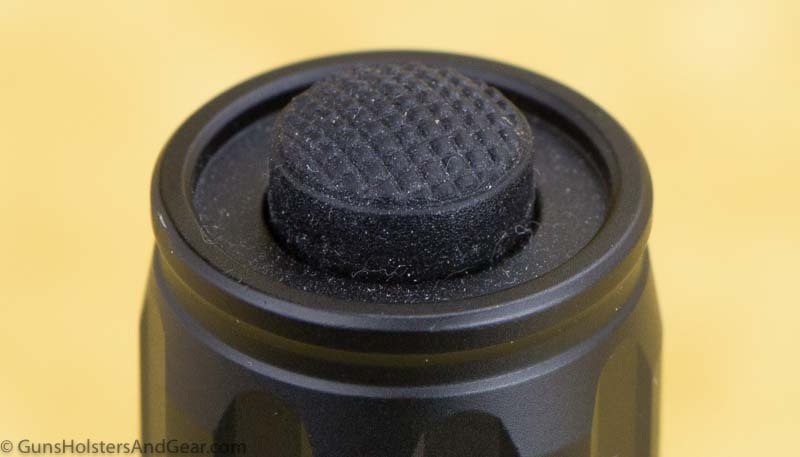
A partial press of the button causes momentary activation, while a full press and click puts the flashlight in a constant-on mode. Repeated partial presses rotate through the available light output levels, of which there are five in this order: blast, high, medium, low and strobe.
Pausing between momentary activations brings the mode back to the highest output level (blast.)
The company states the flashlight is made of an “aircraft-quality” aluminum alloy but does not specify which one. Factor Equipment also states the black finish on the light is a “Type III hard-anodized” finish. A question to the company requesting clarification on the alloy used for the flashlight’s construction has not been answered at the time of this writing.
Made in…?
I could find no information on the box, in the literature or on the company’s website with regards to where these lights are made. The company has not yet responded to my request for information on the country of manufacture.
I do not know where this flashlight was made. If it was manufactured outside of the United States, there are laws and rules that may apply to marking it as such (e.g. 19 U.S.C. 1304.)
I should note that there are many lights manufactured outside of the United States that are of good quality. Being made in China or somewhere else is not an indicator of poor performance. However, I believe it is important that consumers be aware of where a light is made regardless of any law that may or may not require it.
Battery Included
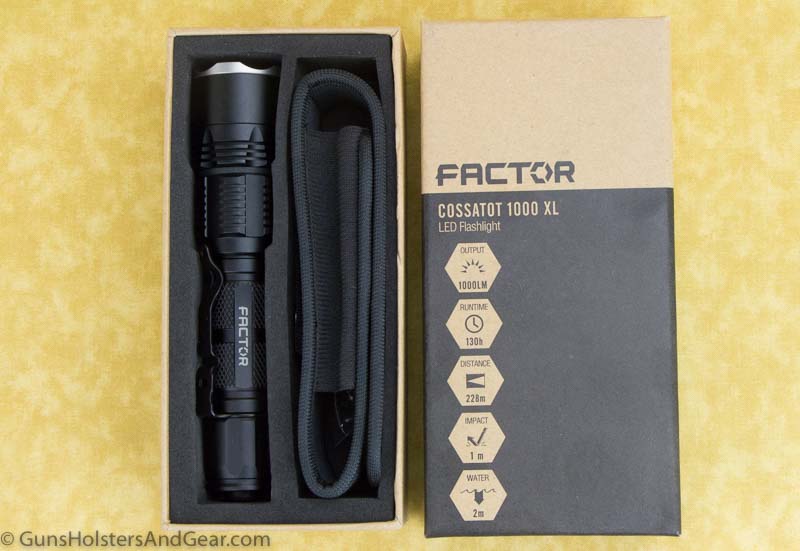
Factor includes a battery, spare parts and other bits in the box with the flashlight. Here is an inventory of what is included:
- 18650 Li-Ion battery (2,600 mAh, 3.7v)
- USB charging cable
- synthetic holster with snapping belt loop (large enough for a duty belt)
- two (2) replacement O-rings
- one (1) replacement rubber tail cap
- pocket clip
- one page manual/information sheet
The battery is branded with the Factor name, and it has “Made in China” printed on it.
A Question of Specifications
As I’ve discussed in greater detail before, there is a voluntary flashlight standard: ANSI FL1. Administered by the Portable Lights American Trade Organization (PLATO), the standard sets out a way of testing and reporting performance of flashlights with the purpose of better educating consumers comparing flashlights.

Factor claims to adhere to the “international flashlight ANSI/NEMA testing standards” (see the above image taken from the flashlight’s instructions.) It is reasonable to assume the company is referring to the FL 1 standard, though I am curious to know why the company did not name the specific standard.
I e-mailed the company’s marketing representative and asked if the light was tested to the FL1 specification. She passed on the question to Griggs, but at this time I have not received a response. A follow-up request for information did not gain any information either.
According to the ANSI FL1 (2009) standard, there are very specific ways performance is to be measured and reported. Unfortunately, when it comes to product packaging, I don’t think the company adheres to the standard. Disappointingly, the manner used to report information on the packaging could be seen as misleading, the opposite intention of the ANSI standard.
Take a look at the front of the Cossatot 1000 XL box and compare it to an acceptable FL1 presentation of information:
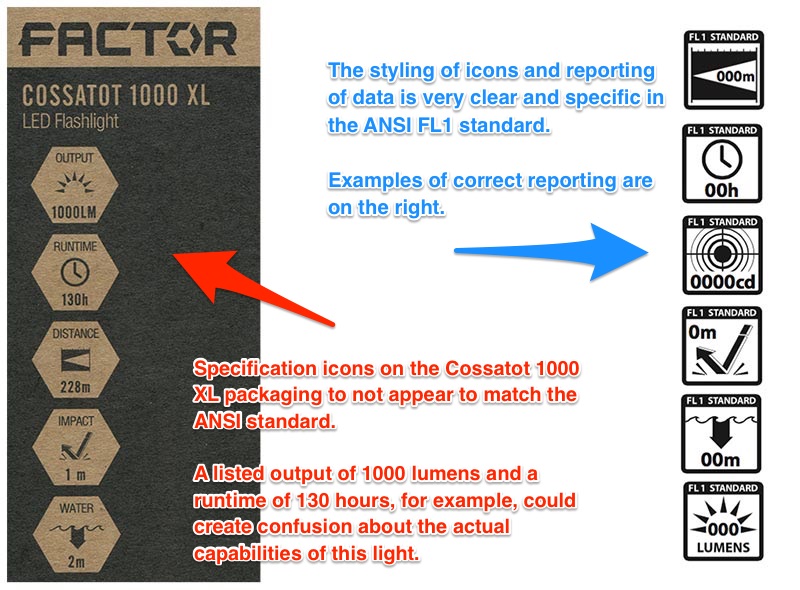
As you can see, there are small wording changes as well as the use of a hexagon, rather than a square, to set off the information. While these seem small, they appear to be inconsistent with the very specific standard (Section 3.1 – 3.4 in the FL 1 specification) to which the company appears to claim to adhere. If the company does not follow the packaging standard, it raises the question in my mind about whether the performance standards are adhered to.
It would appear to me that the packaging is close enough to the FL1 standard as to be confusing to consumers.
Even with the potential gaming of the actual standard in lab testing, Factor Equipment’s claim of both 1000 lumens and a 130 hour run time seem unbelievable on its face. Only after digging into the packaging will the consumer discover a chart that shows the top output as 1,000 lumens with a runtime of only 50 minutes.
In the same chart, inside the box, the consumer will discover the 130 hour runtime refers to an output level of only 6 lumens. In my opinion, the information printed on the box is misleading. You may disagree.
Further examination of the instruction sheet inside of the box, reveals that the maximum output mode of 1,000 lumens, referred to as “blast” mode, is only temporary. The company states that when running for an “extended period of time” the light will power down to only 80% of its potential output. As I understand the FL1 standard, this is acceptable to do and still list the higher output rating.
I asked the company for the precise amount of time the flashlight will remain at the full output before powering down, but at the time of this writing, I have not received any response on this question either. (Note: More than 5 years later, I still haven’t gotten an answer from the company on this.)
Company Provided Specs
Here is the information provided by the company on the Cossatot 1000 XL. Note that the information is both on the website and in the instructions inside the product packaging. An inconsistency between the two is identified below.
| Total Light Output | 1,000 lumens |
| Peak Beam Intensity | 5,350 candelas* |
| Beam Distance | 228 meters |
| Runtime | 130 hours** |
| Battery Power | 18650 rechargeable |
| Weight (manufacturer reported) | 4.7 oz |
| Weight (measured with batteries) | 6.3 oz |
| Length | 5.9″ |
| Body Diameter | 1.0″ |
| Water Resistance | IPX8 (2 meters for 30 minutes) |
| Impact Resistance | 1 meter |
** This number is not believable but is what the company prints on its packaging. On the inside of the packaging (not visible prior to purchase) a more realistic “50 minutes” is indicated.
Read the Fine Print – Warranty
Throughout the company’s website, Factor touts its “30 Day Buy and Try” policy. The company encourages a potential customer to “Buy it. Try it. Use it. Abuse it. For 30 Days.” [emphasis added] However, there are a few things to be aware of.
First, when you take a close look at the policy page (not the banners throughout the site,) you find in small print this disclaimer: “Abuse within reason.”
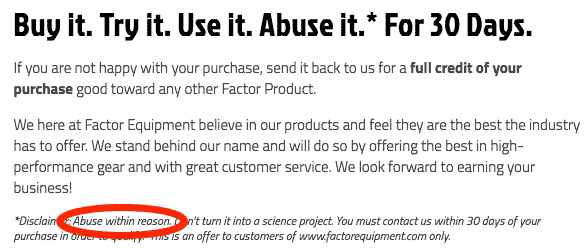
I’m not sure what “reasonable abuse” might be, and I’ve never found a definition for it in any legal literature I’ve reviewed. However, it would appear that the company’s marketing effort encouraging customers to really wring out its flashlights has a very subjective limitation.
On the company’s “About Factor Equipment” page, Griggs personally states:
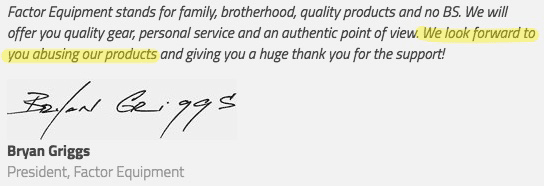
(highlighting added)
I don’t think that someone should be able to shoot the flashlight with a shotgun and then expect a replacement. However, that is an example of abuse. If the company does not want to replace abused flashlights, it should perhaps stop exhorting customers to abuse its products.
Second, the policy only applies to flashlights purchased through the company’s website – not ones purchased through Amazon or other retailers.
Finally, this 30-day policy is only good for credit on the company’s products. So, if you buy one of the Factor Equipment lights and find that it fails to meet expectations, the best you can hope for is another of the company’s lights – not your money back.
The actual warranty is a “limited lifetime warranty” against defects in materials or workmanship. While this is a pretty standard warranty, it certainly does not appear to back you up if you take the company’s advice to go out and use and abuse the light.
Testing
Specifications are like statistics and an educated consumer will eye all manufacturers with a good amount of skepticism. Only through personal experience and testing do I feel comfortable enough to rely on and recommend a product.
Unfortunately, the Cossatot 1000 XL failed during a basic battery of evaluations that I use whenever I review a flashlight.
Let’s go through these one at a time.
Charging
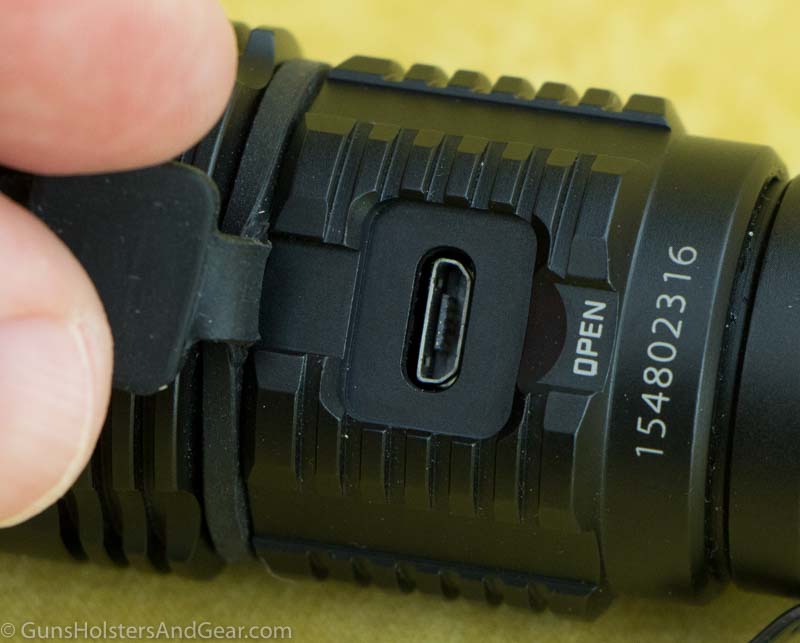
Make sure you read the instructions when trying to charge the flashlight. Unlike every other USB charged device I have encountered, the 1000 XL flashlight does not charge by simply plugging it in.
To charge the flashlight, you must plug it in and then turn it on. The flashlight will illuminate for a few seconds and then shut itself off. When it turns off, it should begin charging.
When the device is charging, there is a pale blue light that illuminates on the side. According to the directions, the blue light will “flash slowly” to indicate the charging process is underway. When the battery is fully charged, “the blue indicating light will turn off.”
Or not.
I would expect that a 18650 battery would charge in a few hours. However, it never charged to the point that the blue light turned off. I let the battery charge for 28 hours on the first try, but it never extinguished.
Not having any way to know when the battery was completely charged, I allowed the battery a minimum of 12 hours to charge between uses.
Something else to keep in mind: as soon as you unplug the USB cable, the white light begins to shine in blast mode. This is critical to understand if you are thinking about keeping this plugged in and charged on your night stand. If you hear something in the middle of the night and grab the light, it will immediately give away your position unless you remember to click it off before unplugging it.
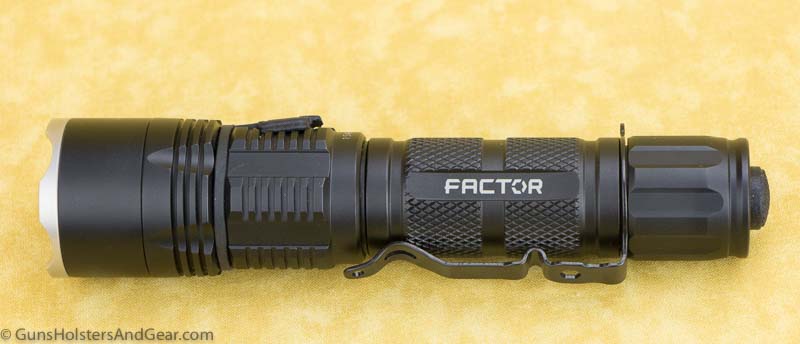
Using an Anker PowerPort 2 (with two 2.4 amp USB ports), the Cossatot 1000 XL drew 5.23 V and 0.90 A. Plugged into a USB 3 port on my computer, the flashlight drew 4.77 V and 0.93 A. As the charging light never turned off, I was unable to measure how much time it took to charge a battery.
One thing that I should point out is that the micro USB port in the flashlight seems much looser than any other I have encountered. Before I figured out I needed to turn the flashlight on to charge it, I thought the port might have lost its connection with the PCB because it was so loose.
Flashing Blue Lights
The Cossatot 1000 XL uses the blue charging indicator light to also let you know when the battery is getting low. When the battery is at least 50% charged, it stays off.
When the remaining battery charge drops below 50%, the blue light will slowly flash. When it reaches 10%, it begins to rapidly flash.
Having a flashing blue light, no matter how dim, on your flashlight is not compatible with either tactical or law enforcement activities. While the blinking only happens when the light is activated – and is unlikely to give away your position – it could be distracting. When you are hunting bad guys in the dark, you do not want any unnecessary distractions.
The location of the blinking blue light is on the side of the flashlight. Unfortunately, it is not covered by my hand when I am holding it. It is plainly visible.
There is no obvious way to disable the blinking blue light short of breaking it. The best I could figure was to use a bit of black gaffers tape to cover up the blinking light.
Output Over Time
As I’ve discussed on this site before, a flashlight’s runtime under the FL1 standard does not report how long a torch will output the reported light output (lumens). Rather it is a report of how long it takes the flashlight to drop to 10% of the reported output.
In other words, a flashlight that puts out 1,000 lumens constantly for one hour would be reported the same as a flashlight that put out 1,000 lumens for five minutes and then 125 lumens for 55 minutes. Under the FL1 standard, both companies could properly rate the output as 1,000 lumens and the runtime as 60 minutes, though in practicality, the flashlights have very different output characteristics.
For my evaluations, I use a hand-built integrating sphere to measure light output. The sphere does not measure lumens or any other absolute specification. Rather, it is a way for me to measure relative output over time.
The sphere allows me to show an output curve on a flashlight and determine how consistent the output is. The measurements from my sphere could also be used to compare one flashlight to another, but it is important to note that this is not a lab test. While I do try to control for outside lighting and other variables, I do not claim it is a perfect system.
Keep in mind that all of the numbers are not hard measurements of output, and are only useful when comparing them to each other and other flashlights I have tested in this sphere.
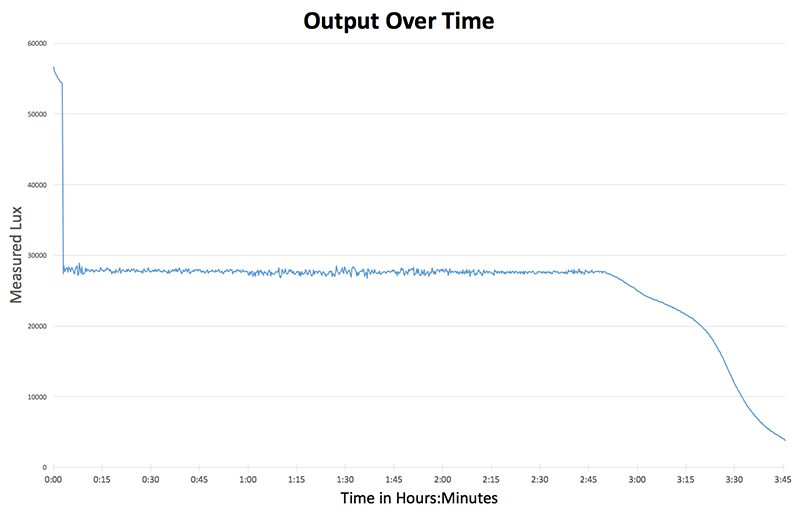
Initial output measured 56,600 lux. Following a similar method as described in FL 1 (2009) Section 2.5.6, I recorded constant output during the 30 second to 2 minute time period and found the peak output was 55,800 lux at the 30 second mark.
The recorded measurement at the 30 second mark is important as it gives the peak output and the base number for calculating runtime. As per the FL1 standard, section 2.4.5, the run time is calculated as the continuous running of the flashlight until output reaches 10% of the base (30 second) number. In this case, 10% would be 5,580 lux.
With this flashlight, the 10% mark was reached at 3 hours, 40 minutes. Again, these are not numbers than can be directly compared to the measurements obtained with a professional integrating sphere in a lab. This number well exceeds the company’s stated 50 minute runtime for the highest output level.
The problem, however, is the highest output level was not actually measured over time with this evaluation.
According to the included information sheet, the light powers down to just 80% of its maximum output when in blast mode for “extended periods of time.” Unfortunately, the company does not specify when the output level is designed to drop.
At the 3 minute mark, I measured an output drop of 26,800 lux, or roughly 49.4%. If the drop is programed at the three minute mark, the reduction would seem to be much greater than stated.
Of course, output was already dropping fast. From the 30 second measurement output had already dropped about 2.9% in only 2.5 minutes.
Factor Equipment states the flashlight’s “high” mode outputs 253 lumens with a runtime of 4 hours and 12 minutes. This runtime is very close to the measured runtime I found when measuring output in my integrating sphere.
I should note that I do not like flashlights that automatically drop power output for me. If I am using the light in a tactical situation – as the light is supposedly designed – one of the last things I want is the light to dim on me. At the very least, the company should provide some way for the user to disable the power drop “feature.”
I’ve seen a number of low-quality flashlights drop power output like this, but without couching it as a feature. I wonder if instead of being a purposeful design decision, the drop is merely a way of explaining an output curve that some might find undesirable.
Unfortunately, since no one in the company corresponded with me regarding the performance of this light, I could not ascertain any additional information.
Heat Generation
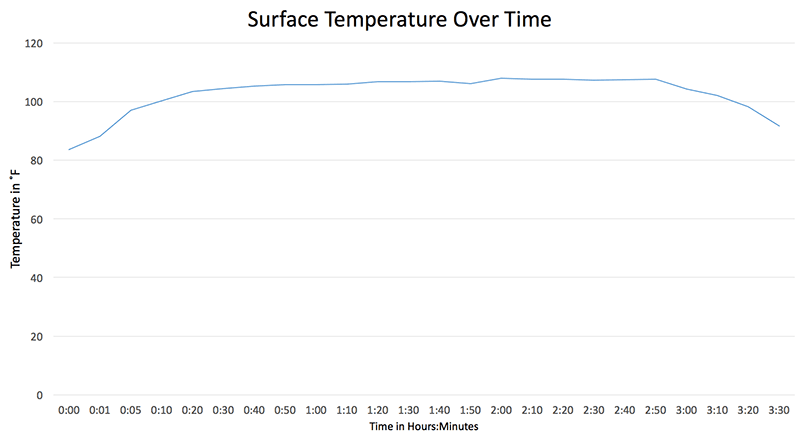
Compared to other high output flashlights, the Cossatot 1000 XL did not generate much heat. The peak surface temperature reading I took was 108.0° F. The reduced light output likely contributed to the relatively cool temperatures.
I’ve measured several lights that had a surface temp that exceeded 140ËšF and would be nearly impossible to hold without gloves.
Visual Comparison
All the numbers in the world really don’t paint the same picture as a photograph can. Below, you can see how bright the flashlight is with a fully charged battery. Drag the slider back and forth to see the before and after. Both of the photos were taken with identical settings on the camera (ISO 400, f8.0, 2.0 seconds) at a distance of 25 feet.


Below is a comparison of the Cossatot 1000 XL (left image) and the company’s Cossatot 1000. The camera settings are identical. It looks like my aiming point for the two flashlights was slightly off, but the overall brightness levels appeared very similar.


On a whim, I also took a photo of the beam from my Streamlight ProTac HL. The ProTac is a similarly sized flashlight rated for 600 lumens. It runs on a pair of CR123a batteries instead of the battery pack. The batteries in the Streamlight were not fresh – they’ve seen light, occasional duty during the past six months.
The Cossatot is on the left and the Streamlight is on the right.


Drop Test
Drop testing is where I’ve seen a lot of lights fail. This is where the Cossatot 1000 XL failed and all further testing ceased.
For my drop testing, I follow the general pattern similar to the FL1 testing by dropping the flashlight onto cured concrete from the height the manufacturer claims it can withstand. If you imagine the flashlight as a cube, it is dropped one time on each of its six sides.
After each drop, I check the light to see if it is functioning and what, if any, damage it might have. A non-functioning light, broken lens or cracked body are all immediate fails. Dings, scuffs and other superficial damage are not fails.
According to Factor Equipment, this light is rated to withstand 1 meter drops. To me, this is the minimum height for any flashlight intended for law enforcement or tactical use.
During this test, I used a pre-cut length of PVC pipe that I have used for other 1 meter drops in flashlight testing. This helps ensure both the correct drop distance and a consistent standard across all flashlight reviews.
I dropped the Factor flashlight head first and then tail first. The light seemed fine after both of these drops. There were very minor scuffs on the surface and no issues with the light.
The problems started when I began dropping the light on its sides. After the first drop on the side, the light began to flicker as if internal contacts were no longer solid. The body of the light had very little damage to the finish. Technically, this is a fail as the normal workings of the light have been diminished by the drop.
Two additional drops on the side of the flashlight resulted in the same: little visible damage and the flickering LED.

After the fourth and final drop, the light ceased functioning entirely. No amount of shaking or clicking would get the light to function. I checked all battery contacts and they seemed fine. Additionally, the battery appeared undamaged.
As the light was no longer functioning, I was unable to do any additional testing.
I should note that the FL1 standard on impact resistance is quite tough and unforgiving, and even tougher than my regimen. Where I have one flashlight to test, the FL1 standard has a sample size of five that all must pass its prescribed testing.
Water Resistance
As with the FL1 testing, I perform the water resistance evaluation after the drop testing. This helps ensure that the flashlight was not structurally compromised during the drop test.
As the light ceased working during the drop testing, I was not able to perform any water resistance testing.
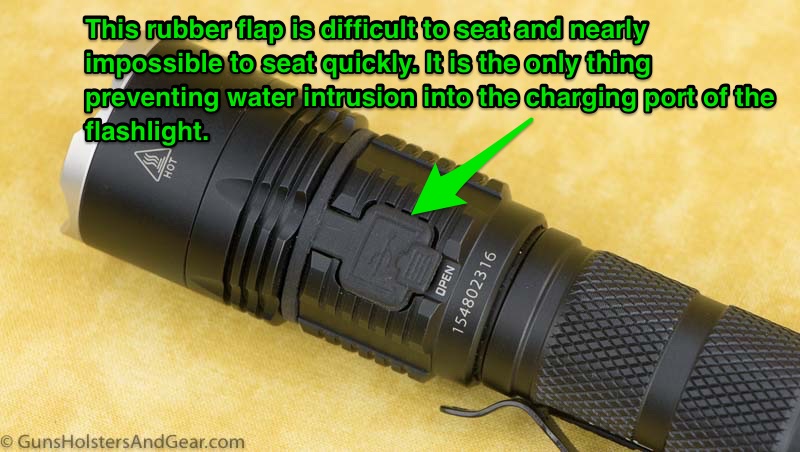
The micro USB port is protected by a rubber seal similar to the one used on the company’s Cossatot 1000 (no XL). In a separate test of that light, the seal worked and the flashlight passed the water test without problems.
However, this rubber seal is difficult to properly align and seat. It takes concentration to ensure it is properly fitted and will provide water resistance. I was unable to seat it quickly, and I do not like the way it is designed. Without it properly seated, I do not think it would provide reliable splash resistance, much less be submersible.
Use and Activation
As the flashlight failed my impact resistance testing, I was unable to try this light in any tactical training to get a feel for how well it performed. Also, I was unable to test it mounted on a rifle as a weapon light.
Prior to conducting the formal testing, I had familiarized myself with the light’s operation. As I mentioned above, the tailcap switch is the sole controller on the light. So, to pick a light output mode, you have to cycle through the modes using the same switch that activates the light.
Some companies get this right, others do not. In my opinion, Factor Equipment almost gets it right, but not quite.
If you momentarily press the switch about once a second, you will always get the highest output mode. However, if you go a little faster than that, you can start cycling the modes rather than merely turning on the light. As it stands, the system is nowhere good enough for me to use on duty or for home protection.
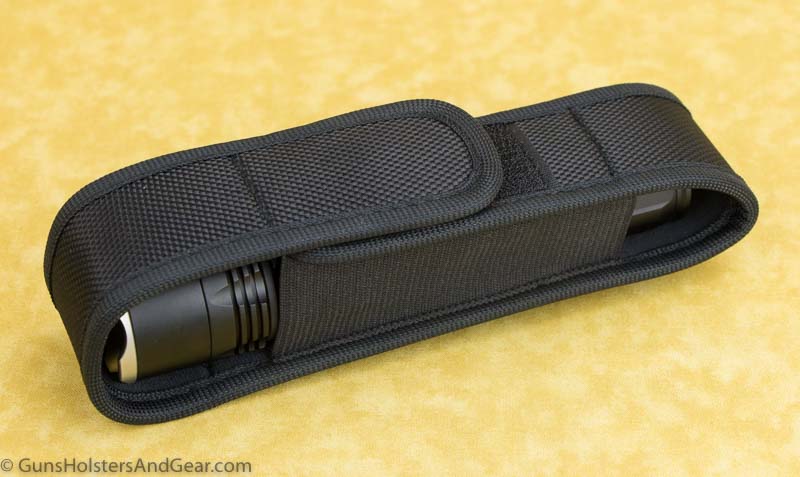
The included holster is acceptable for regular use as long as you do not rely on the button snap. The button snap comes undone far too easily for duty use, and I even had it pop off just getting in and out of my car.
However, there is a second loop underneath the snapping belt loop. This loop is sewn to the holster and is much more durable. I was able to slip this onto a 2.25″ duty belt, and it seemed secure.
Final Thoughts
I recommend against buying this flashlight for a number of reasons, not the least of which is that it failed my drop test at 1 meter. Any flashlight billed as being suitable for tactical work must be able to withstand minor impacts, and several drops onto concrete from a height of only 1 meter killed this light.
Other characteristics that helped form my opinion that this product is unsuitable for tactical, security or law enforcement use:
- visible blinking blue light that cannot be turned off when operating the light with a partially drained battery
- multiple light intensity modes controlled by the activation switch that can accidentally reduce the lighting level
- a quick drop in power output in the highest output mode
- the unprotected tail switch may be prone to accidental activation
As a general-purpose light, you might find it acceptable. If you keep it regularly charged and don’t subject it to heavy use, it will likely please some people. I just don’t think it is a good flashlight for what it purports to be.
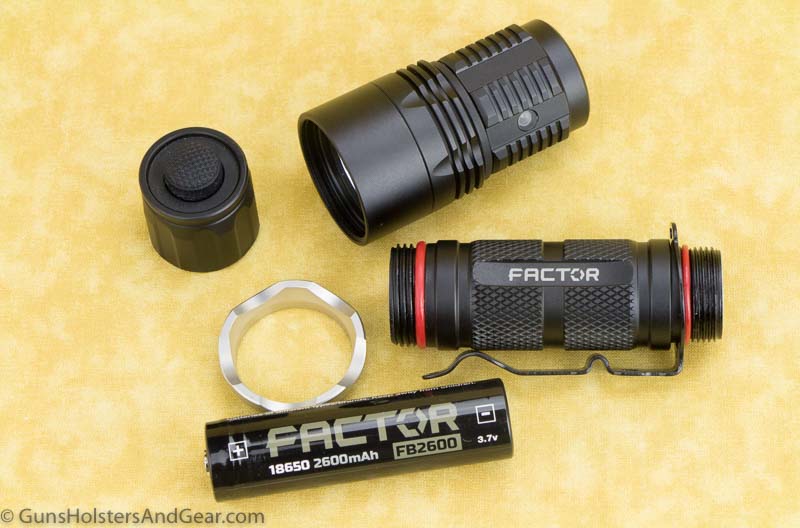
A dive light, for example, might be great for its purpose but be wholly unsuitable for every day carry (EDC). Conversely, a general-purpose flashlight can be inappropriate for law enforcement duties.
Bottom line: I do not recommend the Factor Cossatot 1000 XL flashlight for anything other than a general-purpose flashlight.
Alternatives
If you are a fan of USB charging for your flashlight, there are other options on the market. In the tactical category, I have tested and really like the Streamlight ProTac HL USB. In my testing, the ProTac HL USB ran for nearly 90 minutes at the same power output level in my integrating sphere as the Cossatot 1000 XL did for 3 minutes. This is in spite of the lower output rating Streamlight uses (850 lumens).
Additionally, the ProTac HL USB has a heavy metal sleeve with O-rings that slides back to reveal the USB charging port. A small red light indicates charging. When in use the sleeve completely covers and protects both the light and USB port. Although rated for water resistance, Streamlight doesn’t try to fool anyone by claiming the light is submersible.
If you prefer to use CR123A batteries, I really like the Streamlight ProTac HL. This light has proven itself to me many times over – both on patrol and in EDC. It is my go-to light for nearly every circumstance. The downside, of course, is that you will need to replace the batteries now and again. You can read a review of the ProTac HL here.
I’m looking at some additional USB rechargeable tactical lights now and hope to have more suggestions in the future.
Last Update: August 21, 2021
Disclaimer
Every reviewer owes his or her readers a complete disclosure on any potential biases that may influence his or her opinions. Unfortunately, very few provide this basic information to readers. I do.
You, the reader, are my primary concern when writing a review. It’s pretty clear that this article will not generate me any goodwill from manufacturers in the industry, but you deserve to be told exactly what this flashlight did and did not do.
I spent hours testing and evaluating this flashlight and have written more than 4,700 words about it. I’ve been fair to the company and flashlight, but I will not pull punches about its shortcomings. You, the reader, deserve the straight truth on the performance of this light. There are too many sites that don’t actually test the gear they write about, and it’s pretty obvious when you read the articles.
Search for “Factor Cossatot 1000 XL Review” in Google, read some of the other articles on this flashlight and make a determination for yourself if those reviews are giving you the information you need prior to spending your hard-earned money on gear.
The flashlight used in this review was provided by Factor Equipment for evaluation. No promises were made by me to do anything other than an honest review of the flashlight.
No monies or other items of value were offered, requested or taken to write the Cossatot 1000 XL review.
I provided a draft of the review to the media representative of Factor Equipment prior to posting this article. This was to allow the company an opportunity to correct any factual errors I may have made, clarify any confusion and to provide additional information they felt relevant to this article.
My last contact with a company representative was on September 15, 2016. I published this review in January of 2017, which I think is more than enough time for the company to offer a response to my questions or findings in this article.
I do not have any financial interest in Factor Equipment or any other business in the shooting, outdoors or lighting industries.
GunsHolstersAndGear.com is a for-profit website. I do not charge readers a dime to access the information I provide.
Some of the links on this page and site are affiliate links to companies like Amazon and Palmetto State Armory. These links take you to the products mentioned in the article. Should you decide to purchase something from one of those companies, I make a small commission.
The links do not change your purchase price. I do not get to see what any individual purchases.
I work very hard to provide fair and honest reviews of products so that you, my readers, can make informed decisions when you need to buy gear. I do so without accepting any advertising, and I refuse to use popups and other annoying tricks that distract from your ability to read the site.
TL;DR
This is a flashlight that is marketed as a tactical light suitable for law enforcement. Based on my testing and the evaluation of the company’s information, I do not believe it is suitable for such activities.
The light failed during the impact resistance testing, and it has a number of problems with its design that make it unsuitable, in my opinion, for law enforcement or tactical use.
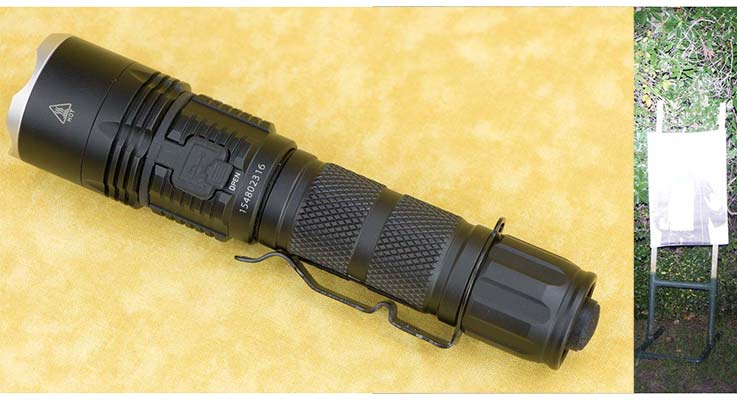
One reply on “Factor Cossatot 1000 XL Review”
Reviews like this one are why I keep coming back. Thanks Rich for taking the time to write these up and shine a light on bad gear.